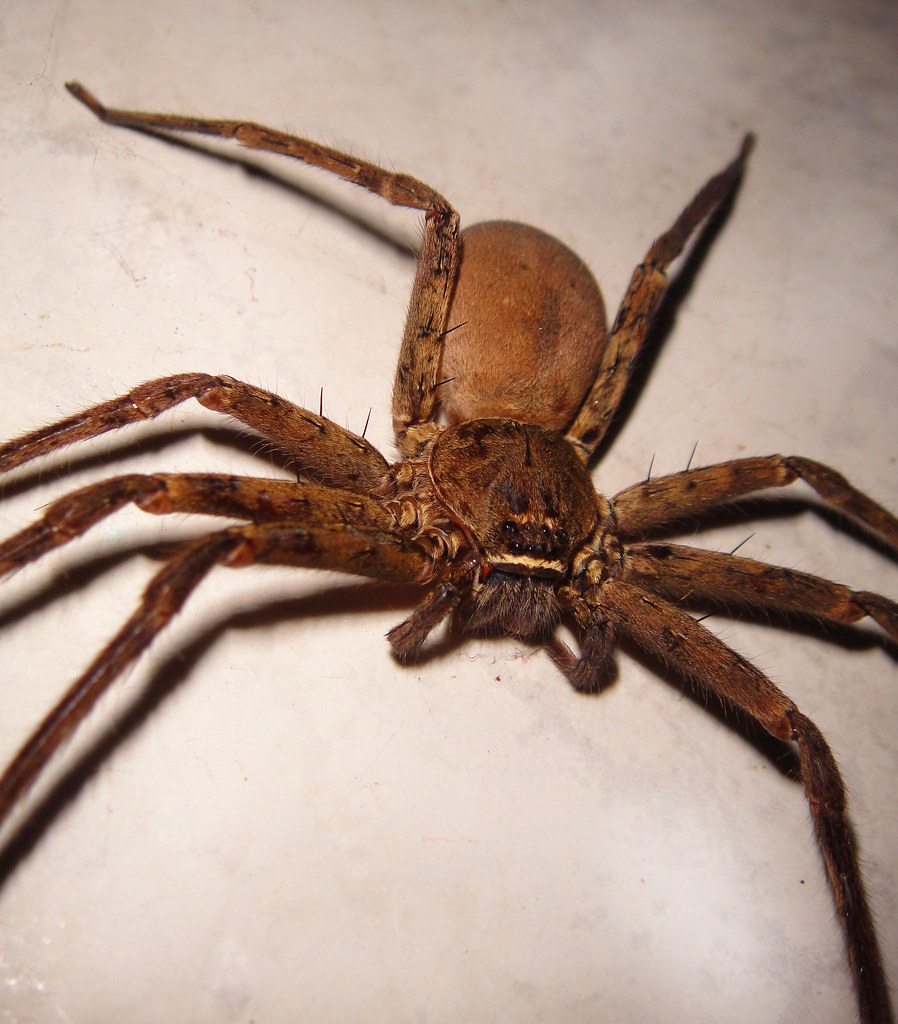

This is around half the maximum speed of Usain Bolt! Where do huntsman spiders live? (and why do they want to get into your home!) Some of the fastest huntsman can cover 30-40 times their body length a second – up to 5m metres persecond for some of the biggest spiders. Huntsman do sometimes ‘jump’, or more often ‘fall’ from a surface to escape, but it’s their speed that is their real asset. Huntsman spiders have an unusual leg arrangement – they sit away from the body – which gives rise to their alternative name, giant crab spiders. If possible, collect the spider for identificationĭO NOT apply a pressure bandage, as this worsens the pain and does little to stop venom movement (as it is slow moving anyway). The patient should sit down and try to relaxĬlean the bite with water and disinfectant

Occasionally victims may get a headache and mild nausea Huntsman spider bite treatment The mild bite only normally causes localised swelling and pain, which subsides within an hour. However, the badge huntsman is reported to have more potent venom. People often ask- are Huntsman spiders dangerous? Although their bite is lethal to insects, their venom is not particularly toxic to humans. They are more likely to run away than attack, unless provoked. Huntsman spiders are not normally aggressive towards humans (except for females guarding their egg sacs). Huntsman spiders will live for two years or more. This certainly is the stuff of nightmares and indeed was used as the “talent” in the film Arachnophobia. These old skins are often found hanging from surfaces and will give you an indication that huntsman are around (and an idea of their size!).Īlthough most huntsman spiders are nomadic, only coming together to mate, the social huntsman ( Delena cancerides), which lives under the bark of trees, will live together in social groups of up to 150 spiders. The young huntsman start out pale and gradually get darker with each moult as they grow.

Once the spiderlings have hatched the female huntsman will often stay with them for several weeks. It may take the eggs up to 3 weeks to hatch and during this period the female may become aggressive whilst protecting her egg case. Although some species will carry the egg case, others will place the egg sac in a sheltered spot and stand guard over it. Potter wasp (Australian hornet) with a badge huntsman, which it will take back to it’s nest as food for its larva Baby Huntsman spiders (and other life-cycle facts)įemale huntsman produce a flat, oval egg sac of silk in which she lays around 200 eggs. One common group of huntsman spiders in Australia includes the badge huntsman ( Neosparassus spp.) which have distinctive colour combinations of white, black, orange or yellow as a “badge” on the underside of the abdomen. Their mottled colouration gives them camouflage on the trees and rocks where they live. Most huntsman are a grey / brown colour, with bands on their legs. However, the largest huntsman most people will come across in Australia is the grey huntsman ( Holconia immanis) with a leg span of up to 23 cm. The biggest species of huntsman is the giant huntsman found in Laos, with a leg span of 30 cm.

Huntsman spider size (and what do they look like?)Īustralia has over 100 different species of huntsman, covering a wide range of different habitats. Huntsman have predators too and they are preyed on by geckos, other spiders and potter wasps. They will eat a wide range of animals, mainly insects (including cockroaches!) so they can be pretty useful to have around. As their name suggests they are hunting spiders, coming out at night to search for prey. Their size, fast movement and ability to “jump”, coupled with their habit of finding their way into houses and cars, has frightened many an Australian! However, in reality huntsman spiders do more good than harm. Huntsman spiders are probably one of the most common (and scariest!) spiders in Australia. The grey huntsman ( Hoconia immanis ) can have a leg span of up to 23 cm


 0 kommentar(er)
0 kommentar(er)
